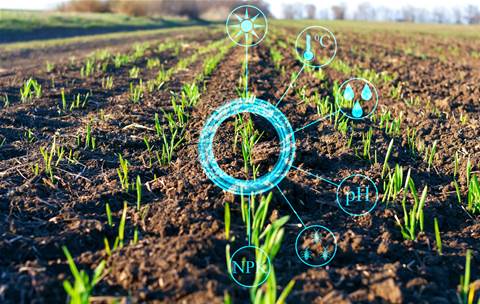Recently, the agtech community has been calling for greater government support for Australian agricultural technology innovations.
As the global population grows, so too does the impact of agriculture on the climate and the challenge of ensuring that everyone is getting enough good food.
Working to overcome this challenge could mean opportunities Australia's IT providers, according to Matt Pryor, a partner at agtech specialist consultancy Agthentic and co-founder of specialist agtech investment firm Tenacious Ventures.
“I'm sure you've heard all the challenges with scaling up the food system to make sure it's sustainable, make sure it’s climate-resilient, make sure it's able to produce nutritious and affordable food – a lot of that relates to innovation,” he explained in conversation with CRN.
“There are estimates that this is a $500 billion a year marketplace for products and services globally. If we were going to pick something to compete at, given our credentials as an agricultural innovator, surely [agtech] is it – it'd be like going to the Olympics and not fielding a swimming team.”
As we look into the future of agriculture, technology will have a large role to play, from the field to the hands of the consumer and everywhere between.
“Increasingly, the supply chain, retail, and consumers want to know more about how their food is produced and so that creates a huge opportunity in information technology. If I say this is organic [or] if I say that it's zero-carbon, how does that information kind of make its way along the supply chain? And then ultimately, when the consumer is expressing a preference, how do you validate those claims? How can they feel confident that what they think is the impact of their choice as a consumer really will yield a better outcome?”
As we have seen over the last few decades, growth in data means a need for providers who can supply systems to collect, manage and secure data. The latter is particularly relevant for farmers who will want to make sure that their information and connected hardware is safe.
“Farmers are already not in control of the weather and are very rarely in control of actual prices that they receive. There’s significant commercial concern that goes along with those privacy-related questions, the idea of further becoming reliant on information that potentially could be used against them. So, [we need] novel solutions there around setting boundaries to say, I want to share this, but not that.
“Then, as more stuff gets connected, all of a sudden you've got massive machines connected to the internet. A million and a half dollar combine harvester – we don't really want that in the hands of rogue actors. I think that will require a lot of solutions being brought from outside into agriculture and lessons learned from other industries, creating opportunities for new products and services.”
Another place where opportunities are arising is in the monitoring and management of natural capital: land, water, livestock and plants; none of which has been immune to the trend toward digitalisation.
“What we're seeing is what other industries might call digital transformation. As the sort of information that's required to support various claims grows, the farming system needs to meet regulatory requirements, consumer preference requirements, supply chain requirements. Increasingly, we are seeing the digital transformation of measurement, reporting and verification of claims and I think that's a massive opportunity area for integrators and system developers.”
For anyone wanting to take advantage of the local and potentially global opportunities that are arising, Pryor said that the approach should be focused on outcomes and RoI.
“It's often the case that people confuse possible with desirable, especially where technology is concerned. I would say farmers are very return-on-investment focused rather than cost focused. Going back to that harvester, a million and a half dollars is a lot of money, but it's also not at all unusual for farmers to make very big purchases of that kind because they will yield a return.
“The guidance for people looking into agriculture for opportunities is to understand where the money is. Not what technology could yield an outcome, but what economic outcome is going to be driven by that innovation.”
It is also important to look at a potential client's particular business model, see why it works, and understand how to bring real value.
“Just working out what product or service is needed and presenting it to the market will not necessarily get a lot of traction. It’s about, how is this going to deliver a return and for whom? And then, who's going to use it? How do we make it really easy? Who's going to pay for it?”
When it comes to agtech, there are a lot of vested interests along the supply chain who might be sponsoring a farm to support getting exactly what they are looking for.
“From just a straight agricultural production point of view, it's simpler to just apply a set rate of fertiliser, because we know what end result we get. But it may be the processor or the food company that's taking delivery of the agricultural product cares as much or maybe even more from an economic point of view about making sure that only the exact amount of fertiliser that was actually needed, got put down.
“The farmer ends up using something to say 'here's the prescription to put down the fertiliser at that variable rate', but it might be that the person sponsoring or paying for a lot of that capability ends up being someone further downstream in the supply chain, because they want to be able to put a product in the market that has really high credentials.”
By innovating in the agriculture space, learning the challenges, and finding the ways that your tech stack can serve specific needs, there may be a massive opportunity for growth and scale as agriculture is entering new ways of working, Pryor said.
If the community petition pays off and the government decides to support R&D in this area, it could mean good things for service providers across Australia.
“It’s really a win-win – we get to create and participate in a big new global opportunity that's high tech, highly supportive of regional areas and will support our Australian farmers with homegrown, home developed, strong, globally scalable businesses.
“The ways in which the government can help to support that are many but, first and foremost, it's deciding that we want to play.”








_(11).jpg&h=142&w=230&c=1&s=1)

.jpg&w=100&c=1&s=0)
_(8).jpg&w=100&c=1&s=0)







.jpg&q=95&h=298&w=480&c=1&s=1)





